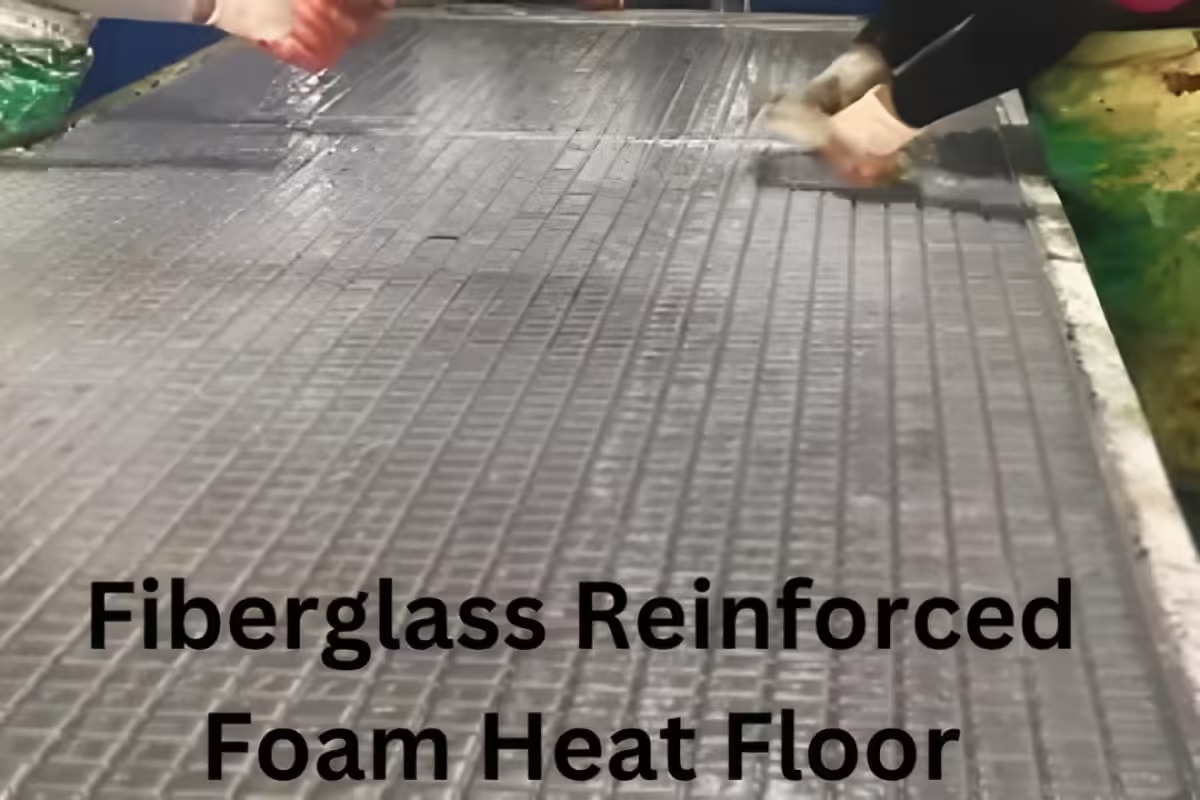Fiberglass-reinforced foam heated floors are one of the solutions that are revolutionizing heating systems in GreenTech with energy efficiency and sustainability on top. Combining the best green materials with optimal energy efficiency, these heated floors will be suitable for homeowners and businesses to reduce energy costs and impact on the environment.
Let’s dive into why fiberglass-reinforced foam heated floors are a game-changer for your sustainable building project.
What Are Fiberglass Reinforced Foam Heated Floors?
Fiberglass-reinforced foam heated floors are one of the special underfloor heating systems. These are made out of lightweight foam filled with fiberglass, which not only makes it strong but also thermostatically efficient.
Using the reinforced foam layer, such floors ensure a well-balanced heat transfer, almost without any cold spots, and in turn reduce the requirement for heating up so much.
This design keeps the spaces warm longer and lowers the consumption of energy, making it ideal for those who value sustainability.
Why Fiberglass Reinforced Foam Heated Floors Are Essential in GreenTech
With the rise of green building standards, the need for efficient heating solutions is greater than ever. Fiberglass-reinforced foam heated floors are crucial in GreenTech for several reasons:
- Energy Efficiency: The previous systems are not energy-efficient and are energy-intensive. They consume a lot of energy, hence waste a lot and increase costs. The heated floors retain heat for much longer periods, ensuring less energy is lost. Therefore, it makes them efficient in reducing the greenhouse gas emissions and also cutting down on the energy bills.
- Durability and Longevity: These floors are quite durable due to the use of reinforced fiberglass. They are more or less impervious to heavy traffic and usage in terms of wear and thus require less replacement, which is an important aspect of sustainable building.
- It will reduce the carbon footprint as this flooring requires minimal power to maintain warmth; this greatly reduces energy consumption, thus reducing the building’s carbon footprint. Its heating is localized to floor level and doesn’t need to compete with colder air at higher points in the room for heating efficiency.
Benefits of Fiberglass Reinforced Foam Heated Floors
- Cost-Effective Heating Solution: Although this system may have installation costs slightly higher than other systems as part of the initial investment, heated floors by foam with fiberglass reinforcement can retain a lot of heat over time, thus saving hundreds on energy bills by just consuming less energy for those warm temperatures.
- It makes the indoor environment warm due to even warmth radiating up from the floor without drafts and cold spots. The system is also silent, making the indoor atmosphere quiet.
- Unlike forced air systems, which could bring all the allergens, dust, and other contaminants from the house into the room,
- Underfloor heating doesn’t circulate air: it’s actually cleaner to breathe inside than outside; this is especially beneficial to households with asthma or allergies.
- Compatible with Renewable Energy Systems: It also matched well with other renewable systems such as solar or geothermal heating. For owners who care about self-reliance, this form of fiberglass-reinforced foam-heated floor can help draw out more benefits from other green sources of energy.
Real-World Applications of Fiberglass Reinforced Foam Heated Floors in GreenTech
Such heated floors, which use fiberglass-reinforced foam as flooring, have been applied practically in residential as well as commercial areas.
In the houses, especially where colder climatic conditions exist, the savings are significant in terms of heating due to greatly reduced heating costs during winter months.
For office or warehouse-type commercial buildings, costs are reduced, and temperatures in such structures are stabilized to ensure that employees and customers in such buildings experience comfort during working and shopping, respectively.
A report done on buildings utilizing this system reports that heating expenses by up to 20-30 percent compared to any of the other traditional heater systems and carbon emissions of half compared to any of those.
These numbers represent the wealth that heated fiberglass reinforced foam floors can provide towards lesser energy consumption and even much more sustainability.
Tips for Choosing and Installing Fiberglass Reinforced Foam Heated Floors
To make the most of fiberglass-reinforced foam heated floors, consider the following tips:
- Assess Your Space: These floors are best suited for areas that require constant warmth, including living rooms, bedrooms, and bathrooms.
- Consult a Certified Installer: The right installation of the heating system ensures maximum energy efficiency and durability of the heating system. Many installers nowadays specialize in GreenTech solutions, so finding the right professional is easier than ever.
- Consider combining the system with other renewable energy integrations. Those with current or integrating renewable energy systems can then combine the systems for optimal savings and efficiency.
Fiberglass Reinforced Foam Heated Floors
In the future, fiberglass-reinforced foam heated floors will certainly be an innovative alternative for home and commercial heating. It is in step with the trend toward greener living since it saves energy, provides a comfortable indoor environment, and minimizes carbon footprint.
Fiberglass-reinforced foam heated floors are one of the more eco-friendly heating options without sacrificing comfort or durability. This is an excellent investment for those interested in a greener future since these floors offer a combination of energy efficiency, sustainability, and durability.
FAQs
How does installation cost compare with traditional heating systems?
Although generally more expensive to install fiberglass reinforced foam heated floors up front than traditional heating systems, they often make a cost-effective long-term value based on energy savings and durability. the
Is there ongoing maintenance required?
Yes, fiberglass reinforced foam-heated floors require minimum maintenance to be kept in order. They require scheduled checks and cleaning of the system periodically so that they may work to the optimal capacity and extend their life for as long as possible while your heating works effectively and efficiently.
Which rooms and flooring types work best?
Fiberglass reinforced foam heated floors work best in living rooms, bedrooms, and bathrooms. They pair well with tile, laminate, and hardwood flooring, providing efficient, comfortable heating for any space.
Can they be retrofitted into older constructions?
Yes, fiberglass reinforced foam heated floors can be retrofitted into older constructions. They are versatile and can be installed over existing flooring, enhancing energy efficiency and comfort without extensive renovations.
Conclusion
Fiberglass reinforced foam heated floors give meaning to efficiency and sustainability while bringing comfort to its users. This energy-saving GreenTech solution should be your choice if you are eager to make that real impact on your energy use and on your environment too. Let the future of environmental heating, fiberglass reinforced foam heated floors, make it warm and greener.
More Read: Vidmattapp Your Guide to the Popular Video Downloader



